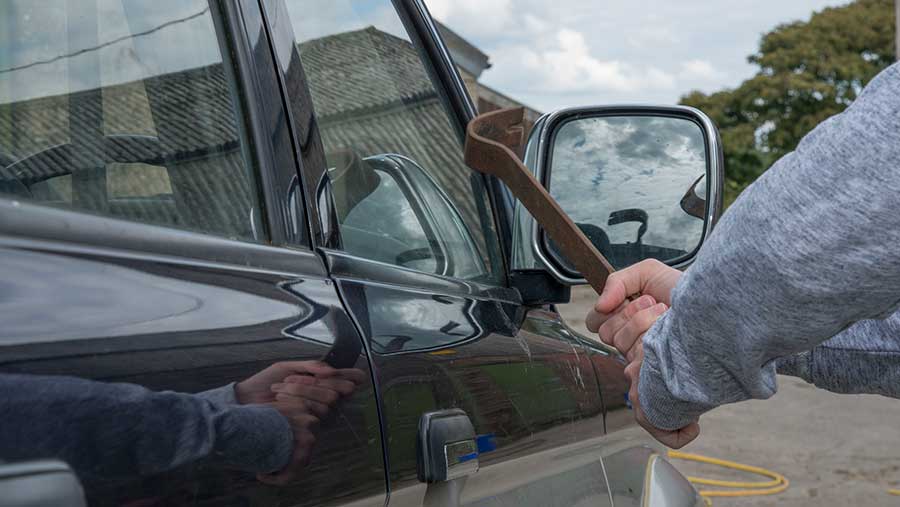Farmers use ‘medieval’ methods to combat rural crime
 © FLPA / John Eveson/REX/Shutterstock
© FLPA / John Eveson/REX/Shutterstock Rural crime increased sharply last year, reveals a report, which says farmers are turning to medieval-style security methods to protect their farms.
Published by NFU Mutual, the 2018 Rural Crime Report says brazen criminals are responsible for the highest level of rural crime for four years.
Overall, rural crime cost an estimated £44.5m in 2017 – an increase of 13.4% on the previous year, which means it is also rising at its fastest rate since 2010.
Rural crime rose most sharply in Wales, up 41% on the previous year, followed by the Midlands, which is up 32%. The South East has seen a rise of 30%.
The cost of rural theft in Scotland fell 3.8% in 2017, while the North East was the only English region to show a fall, down 6.5%.
See also: Ultimate guide to farm security kit
See also: Video – Trench-digging farmer curbs poachers
Fortified farms
NFU Mutual rural affairs specialist Tim Price said farmers were putting up earth banks, dry ditches, stockade fences and high-security single access points to fortify their farms.
Protective animals such as geese, llamas and dogs are being used to provide a useful low-tech alarm system – much as they did hundreds of years ago, he added.
“Faced with repeated and determined attacks from a new breed of brazen thieves, farmers and country people are turning to history books to repurpose security measures from medieval times.”
- Earth banks and ditches – Last used to protect medieval manors, earthworks are being installed along field boundaries to stop criminals driving 4x4s onto farmland.
- Single entry point – Just like Norman castles, having only one way in and out deters thieves, who like a range of exits.
- Reinforced gates – To protect the entrances to farmyards from ram raids.
- Barricaded strong rooms – In the same way medieval homesteaders built special rooms to store gold and silver, modern farmers are using them to protect expensive tools and chemicals.
- High yard fences – To stop intruders climbing over, just like historic stockades.
- Protective animals – Geese and dogs still provide a useful low-tech alarm system, just as they did hundreds of years ago.
Mr Price said adapting centuries-old security with high-tech solutions was proving successful in deterring thieves who didn’t fear being caught on camera.
Farmers were also using high-tech tracking devices and immobilisers on vehicles, CCTV video, dash cams, motion sensors, infrared surveillance and SmartWater markings on equipment.
Scarce resources
The report says limited police resources and repeat attacks are the biggest fears for people in rural communities, with many forced to change the way they live and work due to rural crime.
Mr Price said budget cuts and bigger workloads meant police forces were finding it hard to resource rural policing, which may be one of the reasons for the rise in thefts.
“However, social media is fast becoming the new eyes and ears of the countryside, strengthening the community ties that help in the reporting and recording of crime and bringing thieves to justice.”
NFU Mutual has invested more than £1.2m to tackle the menace of rural crime.
Further action
For the past seven years, it has funded a specialist agricultural vehicle police officer through the National Vehicle Crime Intelligence Service (NaVCIS).
This helps co-ordinate farm machinery theft information between police forces, Border Force and Interpol – as much stolen machinery is shipped abroad.
NFU Mutual is a key stakeholders with the Plant and Agricultural National Intelligence Unit (PANIU), which also aims to combat farm theft.
In Scotland, NFU Mutual provides financial support for the Scottish Partnership Against Rural Crime (Sparc)
It also provides support and expert advice to many local farm and rural watch schemes.
